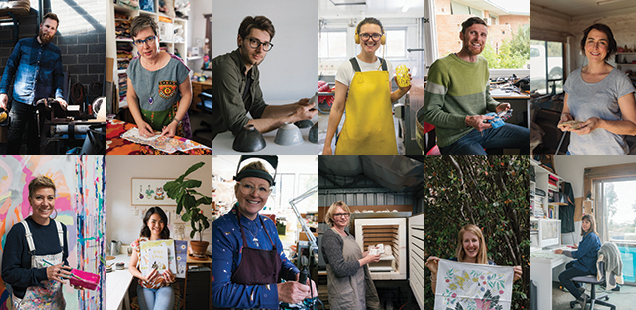 While accessible online distribution and social media marketing have empowered a new era of growth for creative, craft-based micro-enterprises, the perennial challenge of balancing creativity and business acumen to establish a successful enterprise remains.
While accessible online distribution and social media marketing have empowered a new era of growth for creative, craft-based micro-enterprises, the perennial challenge of balancing creativity and business acumen to establish a successful enterprise remains.
In a newly released Australian Research Council (ARC) investigation into craft-making as a multi-million-dollar micro-economy, University of South Australia’s Professor Susan Luckman says many people are turning to a craft-making career as a response to shifting economic conditions in Australia.
“Australia is witnessing a boom in the market for handmade goods, which are often seen as a sustainable, ethical alternative to mass-manufactured products,” says Prof Luckman.
“At a time of growing employment uncertainty, shrinking arts funding, and a governmental policy emphasis on encouraging small business, self-employment and the development of a craft or designer maker micro-enterprise can seem like an attractive and logical option for makers.”
In the ARC report, Crafting Self: Promoting the Making Self in the Creative Micro-economy, Prof Luckman notes that, as interest has continued to grow in the creative output of design and craft industries, so too has the attention on the associated economic opportunities and social impacts.
The report identifies the attitudes, knowledge and skills required to develop a sustainable creative micro-enterprise, but despite strong evidence such businesses can provide a genuine alternative to traditional employment, it also notes there are many challenges faced by craft-based entrepreneurs.
“Our research shows the biggest challenge for this sort of endeavour is being able to balance the creative aspects of the enterprise with the business skills required to turn great ideas or products into income,” says Prof Luckman.
“Often you find someone has a brilliant handmade product, but they need to be given the support and opportunity to establish market connections and build a sustainable business around that, just as entrepreneurs in other fields are supported in various ways.”
Prof Luckman notes the New Enterprise Incentive Scheme (NEIS) – which provides income support and training to individuals registered for Newstart benefits who want to start a small business – has been of great value to many now making a living in the craft-making sector.
“Widening the availability of NEIS support to people not on Newstart, but also not currently employed or receiving an income, has great potential to unlock opportunities for more craftspeople,” says Prof Luckman.
“Few of the people we have interviewed for the report have written a formal business plan or have anything more than a hand-to-mouth approach to managing the financial side of their business, but many of those who have completed NEIS acknowledge the positive impact it had,” says Prof Luckman.
The report also recommends the reinstatement of grant schemes to support collaborations between industry and creative micro-enterprises, and the provision of funding to maintain higher education studio practice and enable hands-on learning to grow the design-craft sector.
“Our research indicates a growing number of people are seriously devoting themselves to a career in craft and design making,” says Prof Luckman. “It makes sense then to support and foster the sector through education and training schemes, in order to ensure it grows into a sustainable and vibrant part of the Australian industrial landscape into the future.”
Given there is a growing awareness of and concern about the environmental and social consequences associated with the consumption of mass-produced goods, Prof Luckman says fostering a strong craft economy in Australia may also carry benefits beyond the economic opportunities for makers.
“Increasingly, consumers are looking for something more personal and more sustainable, where they can have a connection both with the product and the person who created it, and this lends a powerful extra dimension to the craft industry absent from many other modern retail models,” says Prof Luckman.
To download the report, Crafting Self: Promoting the Making Self in the Creative Micro-economy, visit: www.apo.org.au for details.
Images: Rosina Possingham Photography
